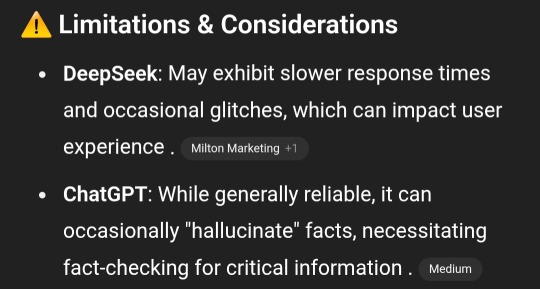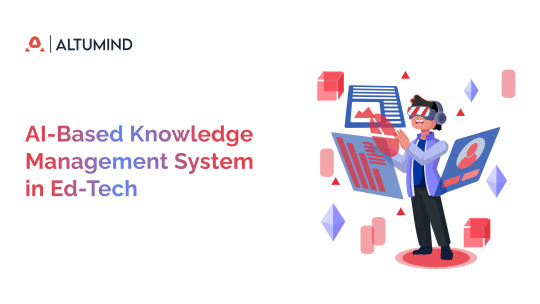#AI Systems
Explore tagged Tumblr posts
Text
Snow white Ai Genarated
#disney#ai#ai generated#ai powered authoring tool#ai systems#snow white#amazing#video#weird#strange#my video
61 notes
·
View notes
Text

@justdavina Astrodavina
#ai systems#astrology#astro community#astro notes#astro observations#astronomy#twisted astro#solar return#vedic astrology#outer space#lgbtqia#galaxy#space#planets#universe
8 notes
·
View notes
Text

@astrodavina
#ai space#fashion design#san francisco#ai generated#cross dressing#ai systems#ai superhero#ai sci fi#ai sexy#ai sweater girl#ai illustration#graphic design
2 notes
·
View notes
Text
Ethics of autonomous weapons systems and its applicability to any AI systems
Highlights • Dual use of AI implies that tools designed for good be used as weapons and the need to regulate them from that perspective. • Tools which may affect people′s freedom should be treated as a weapon and be subject to International Humanitarian Law. • A freeze in investigations is neither possible nor desired, nor is the maintenance of the current status quo. • The key ethical principles are that the way algorithms work is understood and the humans retain enough control. • All artificial intelligence developments should take into account possible military uses of the technology from inception.
Source
2 notes
·
View notes
Text
AI = bad, but only when you feel like it is
I find it funny that a lot of people demonizing "AI" actually love AI but only for uses they approve of. It doesn't even actually matter to them how the training data is sourced. People are celebrating real-time automatic captions for inclusivity, but they would not have been possible without feeding the system lots and lots of manually transcribed videos without anyone's knowledge or consent.
Same for image recognition systems. They also need a huge amount of data, and though some of it might be produced by the company producing the AI, most of it is "stolen" from the internet. But they are very useful especially for visually impaired people, so that usage of this kind of training data also gets a pass.
Could someone who loves to hate on big bad AI explain why it is permissible to "steal" the training data in these cases?
2 notes
·
View notes
Text

"ChatGPT has meltdown and starts sending alarming messages to users
AI system has started speaking nonsense, talking Spanglish without prompting, and worrying users by suggesting it is in the room with them"
:-D
Imagine, there are some people that trust that garbage to... anything?
It's as if they took the Internet-of-Things (...of Shit) actually harmful trend, looked at it and had a long hard think about "how can we possibly do anything more idiotic and harmful to the general public" and then they found it.
#chatgpt#chatgpt bug#ai generated#ai image#ai artwork#ai girl#ai art#ai#a.i. art#a.i. generated#a.i.voice#a.i.#artificial intelligence#ai systems#ausgov#politas#auspol#tasgov#taspol#australia#fuck neoliberals#neoliberal capitalism#anthony albanese#albanese government#internet#infotech#information technology#it#i.t.#computers
3 notes
·
View notes
Text
I love good Audiobooks on new tech.
#Accessibility#AI#AI 2041#AI and Global Power#AI Ethics#AI hidden costs#AI history#AI risk#AI successes and setbacks#AI systems#Ajay Agrawal#Alexa#Algorithms of Oppression#Artificial Intelligence: A Guide for Thinking Humans#Atlas of AI#Audible#Audiobooks#Brian Christian#Caroline Criado Perez#Data bias#Ethical Machines#Future of artificial intelligence#Google's AI#Inclusivity#Invisible Women#Kai-Fu Lee#Kate Crawford#Literature consumption#Mark Coeckelbergh#Melanie Mitchell
2 notes
·
View notes
Text
9/10 times people are talking about AI that than help they're referring to Machine Learning which we've had for years and not Generative AI which is the slop maker
General difference is Machine Learning is fed information to make an educated guess on what will come next in a sequence [as an example, ML was used in the Across the spider verse movies to make the tweening frames I believe] and then Generative AI is fed information to make something new [ie slop]
Another important thing is that, bc of the way ML works it needs to be fed very specific information in order to work properly. You can't scrape from a website and stuff all that info into an ML like you can a LLM (large language model, typically used in GenAI)



#wizzardrambles#ai systems#i actually had a hyperfixtation on AI and LLMs in highschool which i feel...very guilty anout both as an artist and a writer#and someone who cares about the environment#but IS actually really interesting#in my daily life i can find maybe. 2 things that j could use genAI for and thats not enough for me to argue about how useful it COULD be#its just not worth all the damage it does and dangerous shit it can create#90% of the stuff you want out of genai can be done with a bit of elbow grease and letting ur freak flag fly
180K notes
·
View notes
Text
Top 3 AI Security Mistakes New Developers Make and How to Avoid Them
Have you ever built an AI model only to realize it’s vulnerable to attacks? As AI powers everything from apps to smart devices, new developers often overlook critical security steps. These mistakes can lead to data breaches or system failures. This article highlights the top three AI security mistakes new developers make and how to fix them.
Mistake 1: Ignoring Data Privacy
Many new developers focus on building AI models but forget to secure the data used for training. Unprotected datasets can expose sensitive user information, like names or credit card details. For example, a healthcare AI trained on patient records could leak data if not encrypted. Always prioritize data privacy to build trust and avoid legal issues.
How to Fix It
Use encryption tools like AES to protect sensitive data. Anonymize datasets by removing personal identifiers before training. Regularly audit data access to ensure only authorized team members handle it. These steps keep your AI system compliant with regulations like GDPR.
Mistake 2: Underestimating Adversarial Attacks
New developers often assume their AI models are foolproof, but adversarial attacks can trick them. For instance, slight changes to an image can mislead a facial recognition system. These attacks exploit weaknesses in how AI processes data. Ignoring this risk leaves systems open to manipulation.
How to Avoid It
Test your AI models with tools like the Adversarial Robustness Toolbox (ART). These platforms simulate attacks to reveal vulnerabilities. A Certified AI Security Expert can guide you in strengthening models against such threats. Regular testing ensures your AI can handle real-world challenges.
Mistake 3: Skipping Regular Model Updates
AI models aren’t “set it and forget it.” New developers often neglect updating models to address new threats. For example, an outdated chatbot might not detect phishing attempts. This oversight can weaken your system’s defenses over time.
How to Stay Updated
Schedule regular model retraining to adapt to emerging threats. Use monitoring tools like Splunk to track performance and flag issues. Stay informed about new attack methods through blogs or webinars. Consistent updates keep your AI secure and reliable.
Tips to Build Secure AI Systems
Start with a security-first mindset. Learn the basics of cybersecurity, like encryption and access control, alongside AI development. Experiment in safe environments, like virtual labs, to test your models. Joining online communities, such as Reddit’s r/cybersecurity, can also provide valuable insights.
Conclusion: Build Safer AI Today
Avoiding these common AI security mistakes—ignoring data privacy, underestimating adversarial attacks, and skipping updates—sets you up for success. By prioritizing encryption, testing for vulnerabilities, and staying current, you can build robust AI systems. Start implementing these tips today to create secure, trustworthy AI that stands the test of time.
0 notes
Text
The Smurfs
28 notes
·
View notes
Text

Type 5 Future @justdavina
#ai fantasy#ai fanart#ai beauty#ai sexy#ai image#ai illustration#ai artwork#ai art#ai generated#ai sci fi#ai systems
3 notes
·
View notes
Text

@astrodavina
#ai sexy#ai generated#my writing#fashion design#san francisco#graphic design#ai systems#ai illustration
2 notes
·
View notes
Text
Day 5
Dear Diary
Have you ever pitted the ai's against each other for fun.
Well I have. In that school yard, he said, she said, they said type of needling.
They range from some facts to getting quite "sarcastic" (I think that's purely because I only ever go on them at 2am and ask them stupid questions because I can't sleep and I don't want to get stuck in a doom scroll or a never ending research pit, you know the type you ask your cousins at sleep overs).
Well tonight it was an outlier says this, deepseek says that, chat gpt brags this, etc.
All in all there was balanced arguments happening. Which all sum up as. The other ai programmes are good at searching for facts but can sometimes pick up wrong information that they appreciate you correcting them about. And chat gpt is that kid in math class staring up at the clouds trying to find bunny shapes.
For instance this was Chat gpt's conclusion to their answer to me saying Deepseek and Outlier and Cortana say they're better systems than Chat gpt

Chat literally said it cannot be trusted and has its head in the cloud.
Love
Manic Mouse
My pain is high. Why won't it let me sleep?
0 notes
Text
is aesthetic2vec a thing? it’s probably not a thing, but it should be
like, in word2vec, king + woman = queen
art noveau + rainbow = psychedelic rock posters
goth + kawaii = pastel goth
etc…
#ai#machine learning#computer science#ai artwork#ai art#ai systems#algorithm#natural language processing
1 note
·
View note
Text
How AI Based Knowledge Management Systems Are Transforming EdTech

Students and educators are slowly gravitating towards a more modern and collaborative learning platform called the Knowledge Management System (KMS). The flexible and self-directed learning in KMS offers more support & agility and fosters better information sharing, making it more up-to-date for the learning needs of today.
73% of all surveyed Financial Service (FS) respondents indicate that knowledge management is important while only 41% of respondents indicate that they feel well-equipped to effectively create and manage knowledge. — Deloitte
The on-the-go and cost-effective learning capabilities of KMS make it easier for Ed-tech institutions to store and deliver course materials — PDFs, PPTs, and other files. Further, students find it easier to access pre-made documents for instantaneous problem-solving. Now, infused with artificial intelligence (AI), KMS will play an even bigger role in many ed-tech academies. Let’s explore how!
AI Based Knowledge Management Systems: Benefits
Intelligent Search
Typing to locate the most relevant doc in any format can be hard. You often end up on the wrong file than what was intended. AI, especially conversational AI via Natural Language Processing (NLP) and Generative AI can solve this problem. Put your type query across as a prompt and AI will display the most relevant file after scanning the contents of the files in the database in a matter of seconds. So, understand the query and fetch the desired file(s) quickly.
Personalized Recommendations
AI can suggest relevant documents based on your role and historical use. It will evaluate your behavior and patterns on the KMS platform to recommend relevant files. Context-aware recommendations tailored to individual users improve user experience on the platform. Further, real-time feedback to leverage machine learning algorithms improves learning leading to more accurate suggestions. This saves time and makes data retrieval more efficient and personalized — enhancing productivity and reducing cognitive overload.
Content Summarization
An AI based knowledge management system can summarize super descriptive reports and research papers and accelerate decision-making. It can give you a nutshell, making data consumption more efficient in a time-sensitive environment. The AI can extract key points, highlight information, and generate summaries in bullet points. What would’ve been information overload and intimidating for a user is now made easier using AI. You could take a preliminary overview of the doc and then read the whole thing out in your free time.
Collaborative Intelligence
Collective problem-solving and knowledge-sharing gets easier with KMS. Peer-to-peer discussions on files across teams, departments, and global enterprises get seamless, as all the info is now collated on one central platform. Organizations can break down cross-department silos and pass on information more seamlessly, fostering a dynamic environment for team-led decision-making. Multiple actors across the hierarchy can now weigh in — leave comments, mark snippets, allow edits, track changes, restrict access, and more from various users.
Predictive Insights
AI Based Knowledge Management Systems can anticipate what will be relevant based on historical data and suggest documents. Leveraging advanced trend analysis means AI can throw relevant recommendations right when you need them. It can also suggest files based on engagement levels, where docs, more in demand, in the academy figure right on top of your dashboard. See what others are reading, stay on top of what’s trending in the Institute, and close that knowledge gap much sooner.
Question and Answers
If Generative AI is embedded in the AI based Knowledge Management Systems expect to see it answer queries straight out of a file in question. Students can get the AI to scan the contents of the file(s) and answer questions without needing to read the whole file — making knowledge consumption efficient and seamless. This AI will leverage NLP (Natural Language Processing) algorithms and neural network transformer-based architectures like GPT to parse user queries and retrieve contextually accurate responses. AI’s semantic understanding, intent recognition, and dynamic response generation ensure users get real-time actionable insights.
Security of Assets
AI based Knowledge management systems can expect heightened security of their sensitive intellectual assets. AI in advanced encryption protocols and automated incident response systems can scrutinize access logs and flag unauthorized activity patterns, something that traditional rule-based systems might miss. It can prevent downloads, lock files, authenticate students, restrict access, flag screenshots, track bulk downloads, send alerts, scan harmful files, restrict replication, and more to safeguard your knowledge repository better.
Tagging and categorization
AI based Knowledge management systems can automatically categorize, tag, and fill up summaries for educational materials. The conventional manual, laborious, and error-ridden approach of labeling docs, filling up keywords, writing a synopsis, etc., is no longer workable. AI steps and makes the process more efficient, accurate, and productive with minimal to no human intervention. This helps save time for educators and admin and they can instead focus on improving the quality of the learning material.
Final Thoughts
Education is evolving. What was once strictly offline has not only gone online but also merged with emerging technologies. The new AI based Knowledge management systems are proof that the Education industry is willing to integrate cutting-edge tech to make education more seamless, intuitive, and fun. The goal is to bridge the gaps, transform accessibility, and create a scalable learning environment where education is more inclusive and tailored to every learner’s unique needs.
If your academy wants to future-proof its learning ecosystem, connect with the experts in Altumind. Our experienced tech-driven consultants with in-depth knowledge in the education vertical can build a tailor-made roadmap that empowers educators and learners. We’ll take you from discovery to implementation and support, all in sync with your budget and distinct mission and vision. Let’s join hands, embrace AI, and shape the future of education together.
0 notes
Text
In the modern B2B world, traditional lead nurturing methods like long email sequences and delayed responses are losing their effectiveness. Buyers today expect instant, personalized, and meaningful interactions. This is where 𝐂𝐨𝐧𝐯𝐞𝐫𝐬𝐚𝐭𝐢𝐨𝐧𝐚𝐥 𝐀𝐈 is changing the game — enabling businesses to engage leads faster, smarter, and more efficiently.
Here's why Conversational AI is the future of B2B lead nurturing:
🔹 𝟏. 𝐈𝐧𝐬𝐭𝐚𝐧𝐭 𝐄𝐧𝐠𝐚𝐠𝐞𝐦𝐞𝐧𝐭
Conversational AI enables real-time responses to prospect queries. No more waiting hours (or days) for a reply — prospects get immediate answers, keeping them interested and engaged.
🔹 𝟐. 𝐏𝐞𝐫𝐬𝐨𝐧𝐚𝐥𝐢𝐳𝐚𝐭𝐢𝐨𝐧 𝐚𝐭 𝐒𝐜𝐚𝐥𝐞
AI-powered bots can tailor conversations based on user behavior, preferences, and history. This means every prospect receives a customized experience without manual effort.
🔹 𝟑. 𝟐𝟒/𝟕 𝐀𝐯𝐚𝐢𝐥𝐚𝐛𝐢𝐥𝐢𝐭𝐲
Unlike human teams, Conversational AI works around the clock. Whether it’s day or night, weekends or holidays, your leads can always get support and information.
🔹 𝟒. 𝐒𝐦𝐚𝐫𝐭 𝐋𝐞𝐚𝐝 𝐐𝐮𝐚𝐥𝐢𝐟𝐢𝐜𝐚𝐭𝐢𝐨𝐧
AI can ask intelligent questions, qualify leads based on set criteria, and route hot prospects directly to the sales team — speeding up the entire funnel.
🔹 𝟓. 𝐂𝐨𝐬𝐭 𝐚𝐧𝐝 𝐓𝐢𝐦𝐞 𝐄𝐟𝐟𝐢𝐜𝐢𝐞𝐧𝐜𝐲
By automating initial engagement and nurturing, businesses can reduce operational costs and free up their sales teams to focus on closing deals.
🔹 𝟔. 𝐂𝐨𝐧𝐭𝐢𝐧𝐮𝐨𝐮𝐬 𝐋𝐞𝐚𝐫𝐧𝐢𝐧𝐠 𝐚𝐧𝐝 𝐈𝐦𝐩𝐫𝐨𝐯𝐞𝐦𝐞𝐧𝐭
AI systems learn from every interaction, constantly improving the quality and relevance of conversations, leading to better prospect experiences over time.
𝐂𝐨𝐧𝐜𝐥𝐮𝐬𝐢𝐨𝐧:
Conversational AI is not just a trend — it’s becoming essential for B2B companies that want to stay competitive. By embracing it, businesses can create stronger relationships, shorten sales cycles, and drive better results.
Are you ready to make your lead nurturing truly conversational?
𝐋𝐞𝐭'𝐬 𝐃𝐢𝐬𝐜𝐮𝐬𝐬: https://shorturl.at/W7lvy
About US: AI Technology Insights (AITin) is the fastest-growing global community of thought leaders, influencers, and researchers specializing in AI, Big Data, Analytics, Robotics, Cloud Computing, and related technologies. Through its platform, AITin offers valuable insights from industry executives and pioneers who share their journeys, expertise, success stories, and strategies for building profitable, forward-thinking businesses.
Contact Us :
Call Us
+1 (520) 350-7212
Email Address
Local Address
1846 E Innovation Park DR Site 100 ORO Valley AZ 85755
0 notes